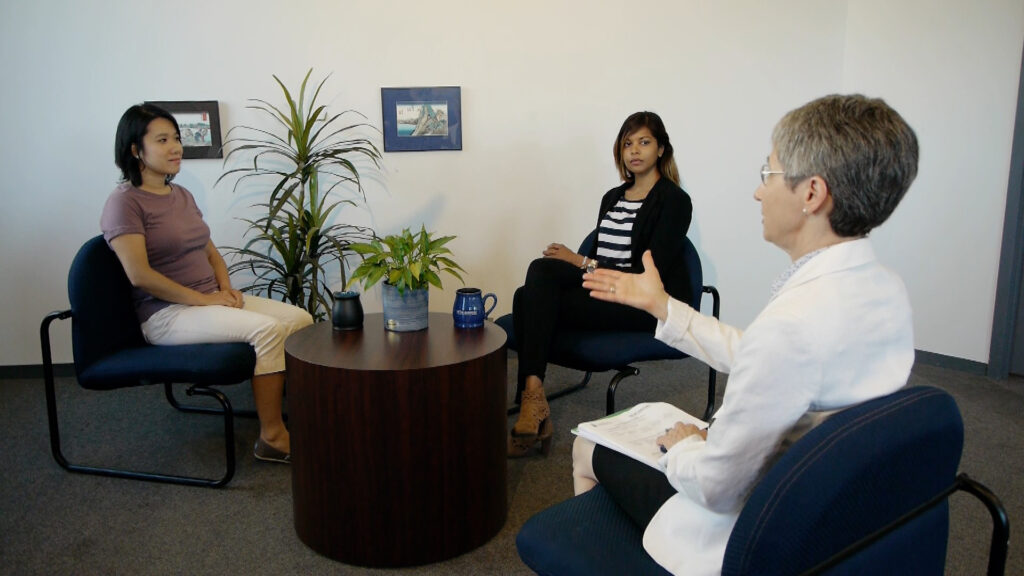What is Simulation-Based Teaching & Learning?
Definition of Simulation
Human simulation at FIFSW is an experiential teaching and learning method where students play role of a social worker in practice, interviewing a simulated client.
Key features of simulation-based learning:
- opportunity to practice with no risk to real clients
- feedback on practice by an instructor
- guided written and oral reflections
(Bogo, Rawlings, Katz & Logie, 2014; Kourgiantakis, Bogo & Sewell, 2019)
| Simulation-based learning is an exemplar method that prepares students for social work practice. |
A leading medical educator defines simulation as a method “to replace or amplify real experiences with guided experiences, often immersive in nature, that evoke or replicate substantial aspects of the real world in a fully safe, instructive and interactive fashion” (Gaba 2007, p. 136).
Students say the confidence boost they receive is invaluable. Before they meet their first clients, they have already practiced working with people facing everything from grief to addictions to chronic health conditions. With experience assessing complex psycho-social-emotional issues, and in managing client reactions to social workers, students enter their internships more self-aware and effective. In addition, they can explore healthy risk-taking, a valuable learning tool, without affecting a real client.
Description of Using Simulation to Assess Learning: The Objective Structured Clinical Examination
